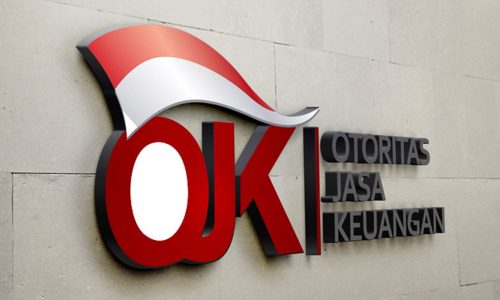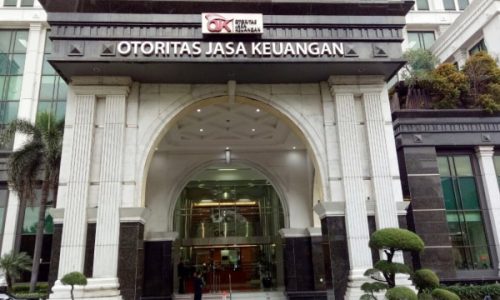The sea is one of the preferred transportation for traders to transfer goods and services by ship as a means of transport due to the higher capacity offered. However, transportation by sea is also a high risk because many unexpected things happen at sea such as bad weather conditions and security disturbances such as piracy and armed violence at sea. When this happens, various legal consequences arise, such as insurance problems related to passengers or cargo carried by ships and compensation problems if two ships are involved in a collision. In addition, there are also legal issues such as the extent of the responsibility of the shipowner and ship operator in the event of an accident at sea. For this reason, business actors need to understand the provisions in maritime law to carry out transportation and international trade activities.
Governing law and regulation
- Indonesian Commercial Code (KUHD)
- Law No. 17/2008 concerning Shipping
- Government Regulation (PP) No. 31/2021 concerning the Implementation of the Shipping Sector
- Bank Indonesia Regulation (PBI) No. 5/6/PBI/2003 concerning Domestic Documentary Letter of Credit as amended by BI Regulation (PBI) No. 10/5/PBI/2008
- International Convention on Salvage 1989
Sea freight contract and documents
In international trade which requires the transportation of goods by sea, the entrepreneur requires an agreement/contract of transportation by sea. In general, sea freight contracts can take the form of 6 contracts, namely:
- Bill of Ladings (B/L)
B/L is a document of ownership of goods on board in the form of a contract between the shipper and the carrier of the goods. The sender here can be the owner of the goods, the seller or the buyer or the party acting as these parties. Meanwhile, the carrier is the ship owner or charterer. B/L serves as proof of a contract for the carriage of goods, a receipt that the goods have been sent to the ship/carrier, and a sign of ownership of the goods.
B/L is usually sent before the goods to the buyer. In practice the shipper will receive the B/L and when the carrier operates under a charter/charter scheme, the B/L is issued after the ship charter contract and is held by the ship charterer/shipper. B/L also serves as a receipt stating that the goods are received in good condition with the agreed amount. In the event that there is a discrepancy in the quality or quantity of the goods, the carrier can make a letter of indemnity. This letter serves to protect the carrier against possible claims that arise due to discrepancies in the quality and quantity of goods.
- Charterparty
In the operation of the ship there are times when the operation is not carried out by the ship owner but by the party who rents the ship. Therefore, a charterparty is needed, namely a contract between the shipowners and the ship charterer. Charterparty is divided into 3 types, namely time charter, voyage charter and bareboat charter. Time charter is a ship rental agreement for a certain period of time only. In the agreement, ship maintenance costs/running expenses/fixed costs are the full responsibility of the ship owner. Then there is a voyage charter which is a ship charter contract based on route or per trip/voyage. The cost is based on a combination of the quantity and volume of goods transported. Furthermore, bareboat charter is an agreement where it is as if the charterer takes over ownership of the ship. This scheme is an option for ship charterers who wish to buy the vessel but have not had sufficient funds.
In the charterparty, there are several terms that must be considered and agreed upon because it determines the period of the vessel charter and determines the compensation that may be proposed by the parties.
- Demurrage is a term of rights granted to ship owners to receive compensation from the charterer if in loading/unloading cargo, the charterer exceeds the agreed time.
- Despatch is a condition where the ship owner must compensate the charterer if the loading/unloading process takes less time than agreed. This despatch amount is usually half of the demurrage
- Freight is the money paid by the charterer to the ship owner along with the delivery of the cargo at the port of destination.
- Dead freight is compensation that must be paid for failing to meet the minimum number of goods stated in the charter party
- Trimming/stowage is the amount of goods that must be fulfilled by the ship in a stable condition
- Sale and Purchase Agreement or Sale Agreement (SPA)
SPA is a primary agreement in the international trade transaction. The agreement has derivatives documents such as B/L, L/C and contract of carriage.
- Letter of Credit (L/C)
L/C is a letter indicated as a promise to pay from the issuing bank to the beneficiary whose payment can only be made by the issuing bank if the beneficiary submits to the issuing bank documents that comply with the L/C requirements. The way L/C works is as follows:
- The importer (Buyer) asks the bank (issuing bank) to open L/C for and on behalf of the exporter (Seller)
- Exporter (Seller) prepares goods and sends goods to importer (Buyer) while issuing B/L and other documentation
- The exporter gives the B/L to the advising bank, which then the advising bank will check the completeness of the documents including the B/L
- The importer (buyer) pays the goods to the issuing bank plus fees. Once accepted, the issuing bank will issue proof of payment to the importer (Buyer).
- The importer (buyer) will take the goods from the shipping company (shipping line) by bringing the B/L document and proof of payment from the issuing bank
- The issuing bank will pay to the advising bank and will then pay the exporter (Seller)
- Certain and direct transportation documents
This contract is used in multi-mode transportation, where in the transportation of goods the entrepreneur involves various types of transportation. In this contract, the various types of transportation are combined and the responsibility/risk that occurs will be resolved based on the applicable law where the damage occurred and based on the mode of transportation when the damage occurred.
- Waybill
A receipt for carriage of goods and may involve more than one mode of transportation.
- Long term sea freight contracts
A contract where there is an agreement between the owner of the goods/sender of the goods to deliver the goods for a certain period of time only. Usually this contract is used on the delivery of goods in large quantities.
- Quality and volume contracts
A contract in which the carriage agreement is based on the quality and volume of the goods transported.
International commercial terms
- Freight On Board (FoB), which is an export-import transaction in which the delivery of goods from the Seller (exporter) to the Buyer (importer) is carried out on board the ship (loading port). In a FoB contract, the seller is responsible for licensing of goods, quality of goods, quantity of goods, authenticity of goods, and transportation of goods (from the warehouse to the loading port). The risks and responsibilities shift when the goods have arrived at the loading port. It is different with the buyer who is responsible for the cost of transporting goods (vessels), port permits, choosing a ship as a means of transport, loading and unloading goods at the port, insurance for the transportation of goods on board, managing customs clearance in the country. destination, transportation (land) from the port of destination to the buyer’s warehouse. This responsibility arises when the goods are delivered at the time of loading the goods at the port to the buyer’s warehouse or the buyer’s hands.
- Cost Insurance Freight (CIF), which is an export-import transaction in which the Seller (exporter) delivers the goods to the Buyer (importer) to the port of destination designated by the Buyer (importer) or based on mutual agreement. In CIF the seller is responsible for licensing, quality, quantity, authenticity of the goods, transportation costs, transportation of goods (from the warehouse to the port of loading), selection of transportation (land or sea), insurance for the transportation of goods on board, and costs of loading and unloading goods on board. loading port. The seller’s risk will shift when the port is unloaded from the ship at the port of destination. On the other hand, the buyer is responsible for the loading and unloading costs at the destination port, land transportation (from the destination port to the buyer’s warehouse, customs clearance in the destination country, and customs fees in the destination country. The buyer is responsible for when the goods are delivered at the time of unloading the goods at the port of destination to the buyer’s warehouse or the buyer’s hands.
Salvage
In the process of international trade by sea, there is a risk of accidents occurring either due to human error or due to nature. In customary international law, the term salvage or rescue efforts at sea is known, which is a condition when a sailing ship knows there is a danger that threatens another ship that is sailing and the ship must stop to help a ship that is in such danger. In Indonesian law, salvage is regulated in Article 545-568k of the Indonesian Commercial Code (KUHD). The KUHD stipulates that salvage is an effort to save passengers and crew, rescue and determine drifting cargo and find cargo stranded on the beach. In an effort to save the salvor is obliged to return all found cargo and safety equipment to the owner. To be categorized as salvage, there are four important factors such as, there is an effort made by the rescuer, the effort is made at sea, the effort is made voluntarily, and the effort must be successful. If the four criteria are met, the party providing assistance can be compensated for the effort.
Collision
In shipping activities, it is very possible to have accidents at sea, whether caused by weather factors or human error. If an accident at sea occurs, there will be many legal consequences, such as claims from cargo owners against ship operators, claims from ship operators to insurance companies, claims from ship owners to ship operators. In general, there are two types of marine accidents, namely collision and alliance. Collision is a collision between two or more ships that are sailing in the waters while allision is a collision between a ship that is sailing with other immovable objects, for example, a pier or a bridge. International provisions on collisions are regulated in the 1972 Convention on the International Regulations for Preventing Collisions at Sea. This provision stipulates that liability for collision events is based on the fault contribution of each ship. This error will determine the amount of compensation for each party. Determination of this error must be proven by the element of “negligence”. If there is no evidence of ‘negligence’ then each ship must be responsible for its own loss. In the KUHD and Law No. 17/2008, the responsibility for ship accidents is the responsibility of the captain unless it can be proven otherwise
Marine Insurance
Unwanted events at sea will have an impact on the amount of compensation borne by the parties. Therefore, the existence of marine insurance is very important to protect the interests of ship owners. The various types of marine insurance available include:
- Hull Policy. This insurance covers damage or even loss of the ship. This type of insurance covers the liability of the ship owner against third party losses as a result of a ship collision. In this insurance, what is covered is the hull of the ship as a whole, so it is very important to be open about the condition of the ship’s material before the insurance contract is formulated. In the hull insurance policy, it is also important to pay attention to the warranty and warranty of seaworthiness.
- Protection and Indemnity Insurance, serves to protect ship owners and operators from claims against damage suffered by third parties, including life insurance and other personal injuries that are not covered. What is covered in P&I insurance includes claims relating to injuries and death, liability to passengers (including luggage/passenger baggage), loss and damage to cargo (including handling fees), ship collision, hull transfer, pollution, loss of property. of the insured vessel, damage to floating objects or installations, towage costs and general average.
- Pollution Insurance. Some marine insurance companies usually provide marine insurance related to marine pollution problems due to the difficulty in obtaining costs from the parties related to marine pollution caused by ship operations. As for what is covered in marine pollution insurance includes costs for damage to the marine environment as well as prevention of spillage of hazardous materials.
- Cargo Insurance, also named as ‘all risks’ policy, covers cargo from the sender’s warehouse to its destination. However, even though the clause stated is ‘all risks’ some things are not covered in this type of insurance, for example damage caused by external causes. This type of insurance also allows a Free of Particular Average (FPA) clause in which the insurer will only be responsible for the total loss and not for the partial loss, unless explicitly stated in the policy clause.









